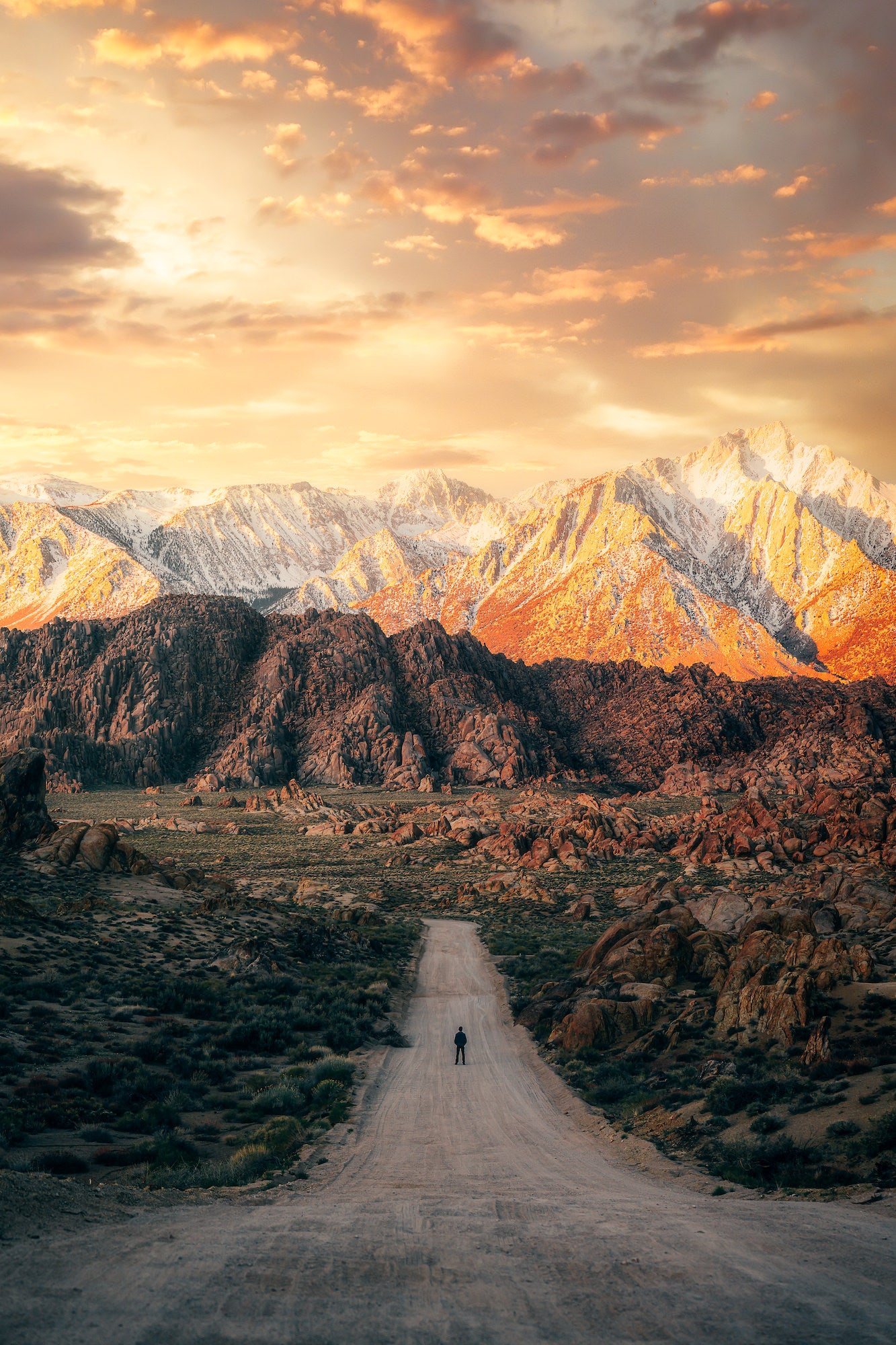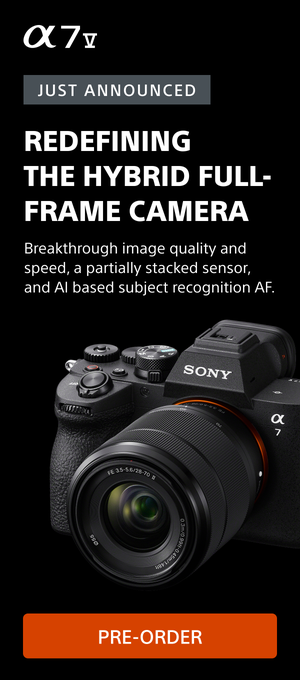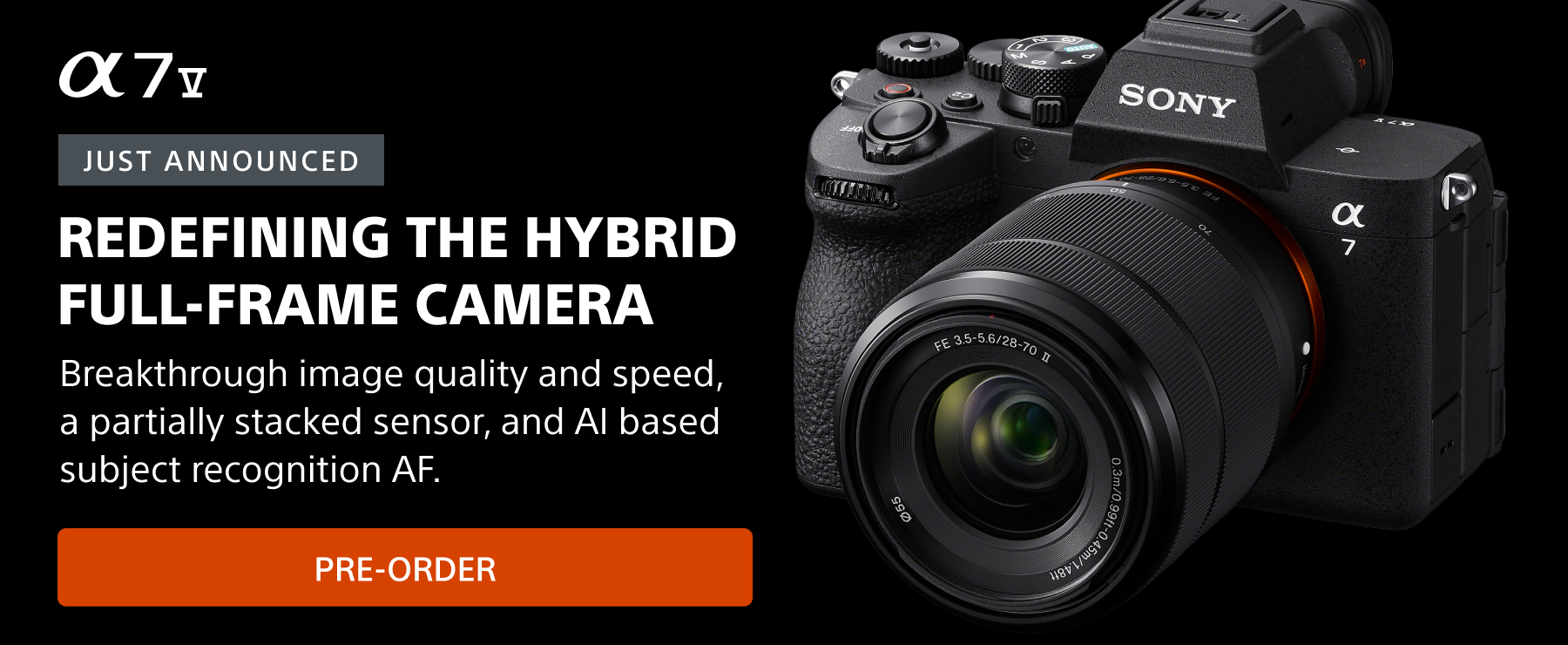Nicole Zelkowitz (@avecnicole) works full time for an airline, but during her spare time she loves to take photographs. “I first picked up a camera in late 2018 when I was going through a super hard time in my life as a way to decompress and dissociate from my problems, and it's been the biggest blessing,” she explains. When Zelkowwitz started she was primarily exploring San Francisco with her camera, but a trip outside of the city changed her life. "I was more of an urban/city photographer than nature," she says. "I was scaling rooftops and shooting everywhere I was able to, and eventually I started venturing off into nature. I took a trip to Yosemite National Park in early 2019 and it changed my life. I instantly went from shooting in the city to exploring all of these beautiful places in nature that I couldn't even believe really existed – the Oregon Coast, the Redwoods, the Eastern Sierras.”
Product Preview – In This Article You'll Find:
–Sony Alpha 7C II
–Sony 24-70mm f/2.8. G Master II
Zelkowitz’s travel and adventure photography has really taken off, and we caught up with her to learn more about how she made this awesome sunrise shot in the Alabama Hills with her Sony Alpha 7C II. She took the image on “Movie Road,” given its name because countless movie scenes, especially in Western films, have featured the dramatic landscape. Keep reading as she explains how she used the compact camera paired with a G Master zoom to capture this beautiful place and perspective.

Photo by Nicole Zelkowitz. Sony Alpha 7C II. Sony 24-70mm G Master II. 1/250-sec., f/3.2, ISO 125
Using The Scene To Show Scale
I took this photo in the Eastern Sierras on a road called “Movie Road” in the Alabama Hills. I've been here a bunch over the last five years and I almost never get solid conditions here. I decided to take a road trip down here back in March with my boyfriend and my dog because my boyfriend has never been, so our plan was just to camp and have fun. I've shot sunrise at this location quite a few times and hoped for clouds every time. It's the perfect place to capture a sense of scale, so I knew I would have him run down the road at the right time to model for me. Once the sun rose above the horizon and the peaks started to get some epic lighting on them, I knew it was time to bring this idea to life. Everything was perfect.
A Compact Camera & 2nd-Gen G Master
Back in November 2023, I switched my entire camera setup over to Sony. I only have one body which is the Sony Alpha 7C II, and I have two lenses which are the Sony 24-70mm f/2.8. G Master II and Sony 70-200mm G Master II. I had both with me, but I used the Sony 24-70mm f/2.8. G Master II to capture this shot. This lens allowed me to capture just the right amount of scenery without making the model too much of a focus or too tiny to notice.
Capturing The Scene
I captured this scene a few different ways prior to shooting this photo. I've taken more wide shots, and more zoomed in shots, but ultimately this focal length is what I liked the most for where I wanted my model to be and how dramatic I wanted the mountain peaks and surrounding scenery to appear.
This area of the Eastern Sierras is truly stunning, and for me this focal length captured it all perfectly. I started shooting at this location during blue hour so I originally had my camera set up on a tripod. While I didn't need my camera on a tripod at the time I took this photo, I still decided to leave it there so I knew my composition was exactly what I liked and wanted.
My camera settings for this photo were 1/250-sec., f/3.2, ISO 125 and my lens was set at a focal length of 48mm.
An Intricate Edit
I use Adobe Lightroom + Photoshop for almost every single photo I edit. I do all of my color correcting on Lightroom, and I do minor adjustments afterward on Photoshop. For all of my edits, I always start by removing chromatic aberration & enabling profile corrections and then scroll to the top of the edit bar and begin my full photo edit. For this photo specifically, after those two steps I started by bringing the exposure up a tiny bit. I always bring my contrast up somewhere between +20-30; in this case it was 30.
For all of my photos, I bring my highlights down to -100, and my shadows will always go up somewhere between +75-100 depending on the RAW photo. In this case, I brought my shadows up to +85. The snow on the mountain peaks were a bit too bright for my liking so I brought my whites down to -20, and my blacks up to +15. I'm a fan of a softer look on my photos without losing quality in details, so I typically will always bring my texture up a bit, while lowering my clarity and dehaze a bit.
Next on the edit bar is a tone curve, and I always aim to have somewhat of a 'S' curve! Your tone curve is within a 4x4 box, and I have a solid diagonal line with 5 points where the boxes meet and adjust from there. I don't like having the blackest of blacks and normally raise my bottom point slightly to bring it to a bit of a faded black while I tend to leave my top point closest to the top as possible to keep my whites and highlights as true as I can and adjust the middle points as I see fit.
My next step is the color mixer. The most prominent colors in this photo are the reds, oranges, yellows, and greens. I tend to desaturate and lower the luminance on the colors in my photos a lot to help me bring them out without making them seem too extra. In this case, I raised the luminance on my greens instead of lowering it so the foreground was able to keep a bit of its detail and prominence. For my color grading, I love bringing more blues into my shadows and more orange into my highlights. I don't touch vignetting on Lightroom because I handle that in Photoshop, but I love using the 'denoise' tool on Lightroom!
After I finish my Lightroom edit, I bring that photo into Photoshop where I dodge and burn my highlights and shadows to bring more detail and drama to them. I also use the burn tool to help me create vignetting in the areas I want it to be. Creating a more prominent light source is also super fun to do in Photoshop, which I used on the left side of the photo via the 'Gradient Fill- Radial Filter' adjustment setting in Photoshop. I love creating an Orton Effect on my photos, which helps it give a more dreamy feel. To create an Orton Effect, I add a duplicate layer and then on the top toolbar under 'Filter,' I create a 'Gaussian Blur' layer. Then, again from the top toolbar, I create a new 'Brightness/Contrast' Adjustment Layer. Afterwards, I brought my photo back into Lightroom where I adjusted the temperature a tiny bit, and added a 'Linear Gradient' masking layer where I darkened the blacks of the entire photo.
See more of Nicole Zelkowitz work on Instagram @avecnicole.



